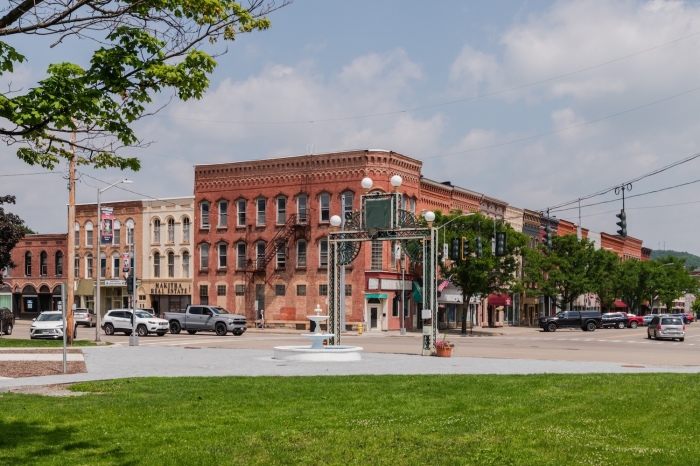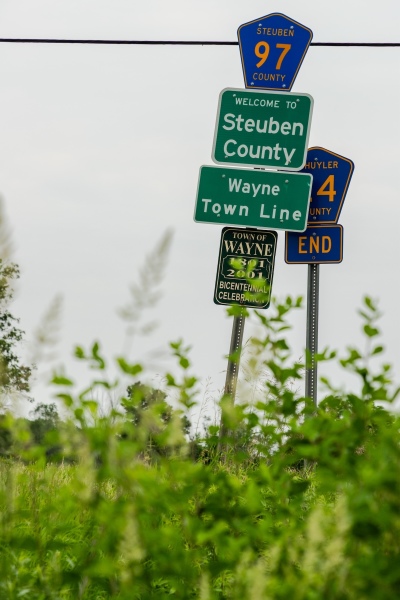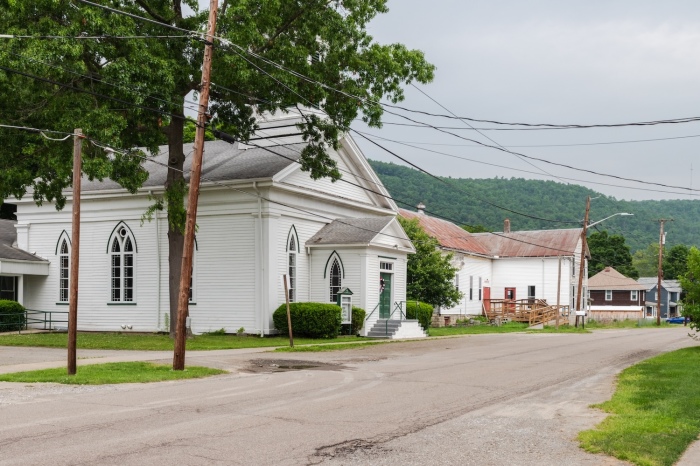
Steuben County is a world removed from what most people think of when they think of New York.
Located in southwestern New York, about halfway between Cleveland and New York City, Interstate 86 bisects the county. That makes getting here relatively easy.
The big draw in Steuben County has always been Keuka Lake. Formed by glaciers, it’s one of the 11 lakes in western and central New York that make up the Finger Lakes. The name comes from their long, narrow shape, which on a map resembles fingers. At nearly 20 miles long, Keuka is the third-largest of the lakes.
Being from Michigan, a state with license plates proclaiming her as the Water-Winter Wonderland, I’m not easily impressed by lakes. But Keuka, with its distinctive Y-shape, is considerably more picturesque than most of the lakes back home due to the high hills that surround it.
The landscape reminded me of Germany, where one finds similar terrain along the Rhine and Mosel rivers. Here as there, vineyards line the slopes.
Viticulture in the Finger Lakes is hardly new. Whether for table grapes or the production of wine and non-alcoholic juice, vineyards in Steuben County have been growing grapes since 1829, when the Rev. William Bostwick, an Episcopalian, cultivated the first vines at the rectory of St. James Church in Hammondsport.

Bostwick, who had the cure of souls at fledgling Episcopal parishes in a few counties, and other early growers used native American grapes or, in Latin, vitis labrusca. These varieties include concord, catawba and Niagara — the grapes often used in the juice sold at grocery stores. More recently, most vineyards have switched to vitis vinifera, the Latin name for European grapes. One of the best-suited grapes is Riesling, a grape synonymous with German wine.
As one might expect given the Finger Lakes wine scene, there are a considerable number of farms both in Steuben County and the surrounding region. It’s claimed the county has more agricultural acreage than any other New York county.
If eating or drinking local isn’t appealing, there is the endless small-town charm one finds in the dozen-plus villages and two cities — the only real difference between villages and cities is how state law classifies municipalities. I think most visitors would refer to the villages as towns.
Every community seems to have at least two churches. That reflects a largely bygone era when religious piety was greater and the differences between denominations, especially among Protestants, on questions of theology or polity were more pronounced.

One such example is the village of Savona, located between Corning, a big-feeling small city, and Bath, a village that does double duty as the county seat.
The village’s 670 souls can choose between worshiping at the 19th century Episcopal church, the Church of the Good Shepherd, and the antebellum Federated Church under an American Baptist minister. It’s a similar situation elsewhere, including Corning.
Three anchors of Mainline Protestantism occupy landmark edifices on West First Street: the Episcopalians at Christ Church, a stone Gothic revival edifice; the Methodists with their red brick Richardsonian Romanesque First United Methodist Church; and the postbellum First Presbyterian Church, a PCUSA congregation that worships in the city’s oldest continuously used church.
Steuben County’s most notable church can be found in the county seat, which was founded in 1793 during one of the first waves of westward expansion following the American Revolution.
While many churches across the country have glass attributed to Louis Comfort Tiffany or his studio, Bath’s First Presbyterian Church is one of the few that has a Tiffany-designed interior. As I explained in a column last December, Tiffany — his family’s Tiffany & Co. still exists today as a luxury jeweler — did ecclesiastical work around the turn of the last century when churches across the denominations had the money to build bigger and grander churches with better architecture and more elaborate interiors.

Though First Presbyterian should also be notable for the Venetian Gothic design by Jacob Wrey Mould, a British-American architect not known for his work on churches, Tiffany’s redesign of the interior, which a rich patron funded, is what draws attention.
Helen Brink, a 95-year-old churchgoer at the PCUSA-affiliated congregation, tour guide and irreplaceable one-woman band for everything history in Steuben County, told me most locals are oblivious to the significance of the church’s decorative art. As today’s cool kids say, if you know, you know.
Walking through the front entrance, which faces a public square to the north and is catty-corner from the county courthouse, you pass through a narthex before entering the nave. All eyes then focus on the south end, where a modest table (not an altar in Presbyterian parlance) with the Holy Bible stands in front of Tiffany’s communion rail and pulpit, built from carved mahogany with inset mosaics. Other Tiffany objects include the rose window above the chancel, the gas-turned-electric lamps in the shape of an acorn, and the relatively modest glass windows lining the east and west walls.
For me, the biggest surprise was the grandeur of First Presbyterian. After all, this is a church in the Reformed tradition. The decorative details wouldn’t be out of place in an Episcopal church of the era and certainly not in a Roman Catholic church. However, in those cases, the geometric patterns used by Tiffany would have instead depicted saints and figurative scenes from Scripture.
If you go
Corning, home to the Fortune 500 company of the same name, punches above its weight, in part, because of two museums. The Corning Museum of Glass combines hands-on glassmaking activities with over 50,000 objects from 3,500 years of glass history. Meanwhile, the Smithsonian-affiliated Rockwell Museum, housed in the Richardsonian Romanesque former city hall, houses a small but notable collection of American art ranging from the Hudson River School to Old West pieces by Frederic Remington and Charles Russell.
First Presbyterian Church in Bath has free tours on Wednesdays in July and August between 10 a.m. and 1 p.m. Tours are also offered after the 10 a.m. Sunday service. Unfortunately, most of Steuben County’s other historic churches are mostly closed outside regular worship services.
I stayed about 30 miles (and 30 minutes) from Keuka Lake in Corning at the Hilton Garden Inn. Some rooms on the upper floors have premium views facing the Chemung River. The Gaffer District, which encompasses Market Street, Corning’s main street in all but name, is within five minutes by foot.
For something closer to the lake, make Hammondsport your base. The Park Inn, an old-school inn with just five rooms and a farm-to-table restaurant, is the best option. If it’s unavailable, book The Hammondsport Hotel Best Western Plus.
Recommended restaurants include The Cellar in Corning, Snug Harbor on Keuka Lake and Village Tavern in Hammondsport. Dr. Konstantin Frank Winery is the big name in the appellation for wineries. Another solid option is Weis Vineyards. For something a little more approachable, Bully Hill Vineyards has something for everyone.
Steuben County is less than five hours by car from the major cities of Pittsburgh, Philadelphia, Washington, Toronto and New York City. Elmira Corning Regional Airport in neighboring Chemung County is the closest airport with commercial airline service, although airfares are somewhat high and flights are limited. Rochester’s airport is 100 miles or 90 minutes away and has more options.
Dennis Lennox writes a travel column for The Christian Post.
Dennis Lennox writes about travel, politics and religious affairs. He has been published in the Financial Times, Independent, The Detroit News, Toronto Sun and other publications. Follow @dennislennox on Twitter.

















